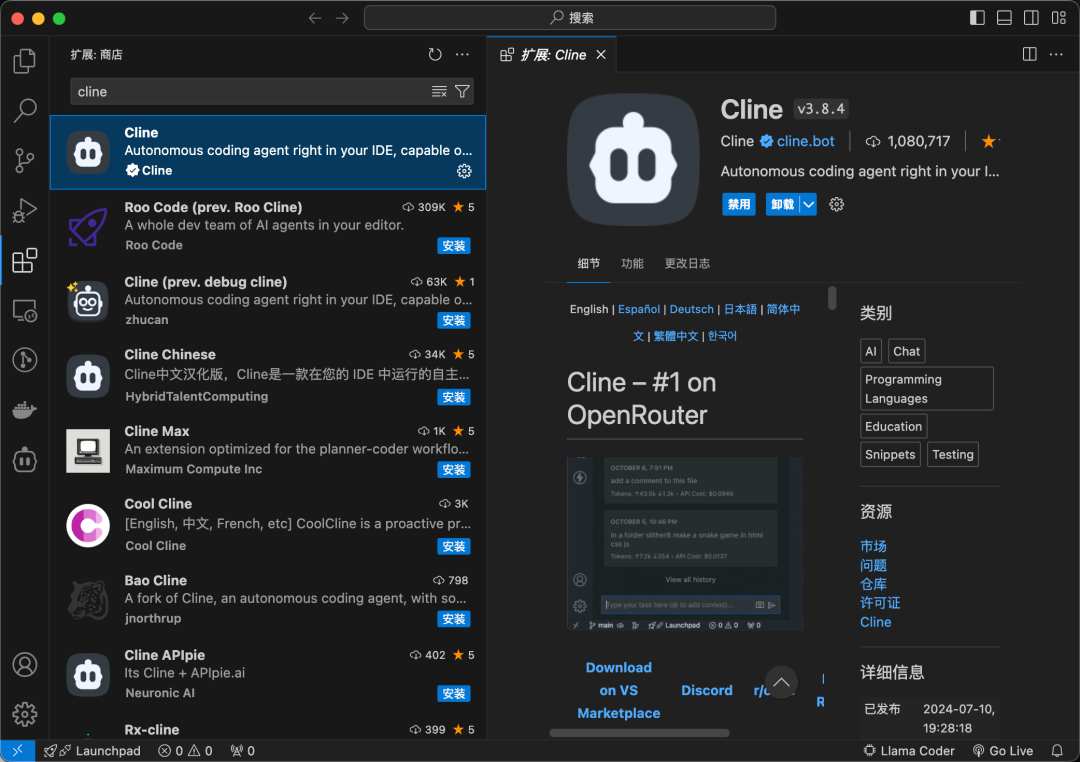
如何在Java中进行单元测试:JUnit 5的使用指南
基础运行平台,支持在不同的IDE、构建工具和插件中运行测试。:包含新的编程模型和扩展模型。:提供对JUnit 3和JUnit 4的支持。
如何在Java中进行单元测试:JUnit 5的使用指南
大家好,我是免费搭建查券返利机器人省钱赚佣金就用微赚淘客系统3.0的小编,也是冬天不穿秋裤,天冷也要风度的程序猿!
单元测试是软件开发中的一个关键环节,它确保代码的每个单元(即最小可测试组件)都能够按预期工作。JUnit 5是Java中广泛使用的单元测试框架,它提供了丰富的功能来编写和运行测试。本文将详细介绍如何在Java中使用JUnit 5进行单元测试。
1. 什么是JUnit 5?
JUnit 5是JUnit框架的最新版本,包含了几个不同的模块:
- JUnit Platform:基础运行平台,支持在不同的IDE、构建工具和插件中运行测试。
- JUnit Jupiter:包含新的编程模型和扩展模型。
- JUnit Vintage:提供对JUnit 3和JUnit 4的支持。
2. 配置JUnit 5环境
在开始使用JUnit 5之前,需要配置项目的开发环境。以下是一个Maven项目的配置示例:
<dependencies>
<dependency>
<groupId>org.junit.jupiter</groupId>
<artifactId>junit-jupiter-engine</artifactId>
<version>5.7.1</version>
<scope>test</scope>
</dependency>
<dependency>
<groupId>org.junit.jupiter</groupId>
<artifactId>junit-jupiter-api</artifactId>
<version>5.7.1</version>
<scope>test</scope>
</dependency>
</dependencies>
对于Gradle项目,可以在build.gradle中添加以下依赖:
dependencies {
testImplementation 'org.junit.jupiter:junit-jupiter-api:5.7.1'
testRuntimeOnly 'org.junit.jupiter:junit-jupiter-engine:5.7.1'
}
3. 编写第一个JUnit 5测试
在JUnit 5中,编写测试非常简单。以下是一个基本的测试类示例:
import org.junit.jupiter.api.Test;
import static org.junit.jupiter.api.Assertions.assertEquals;
public class CalculatorTest {
@Test
public void testAddition() {
Calculator calculator = new Calculator();
int result = calculator.add(2, 3);
assertEquals(5, result, "2 + 3 should equal 5");
}
}
在这个示例中,@Test注解标记了一个测试方法,assertEquals方法用于断言预期结果与实际结果是否相同。
4. JUnit 5的基本注解
JUnit 5提供了一系列注解来帮助管理测试生命周期和测试方法:
- @Test:标记一个测试方法。
- @BeforeEach:在每个测试方法执行之前运行。
- @AfterEach:在每个测试方法执行之后运行。
- @BeforeAll:在所有测试方法之前运行,仅运行一次,需为静态方法。
- @AfterAll:在所有测试方法之后运行,仅运行一次,需为静态方法。
以下是使用这些注解的示例:
import org.junit.jupiter.api.*;
public class LifecycleTest {
@BeforeAll
static void initAll() {
System.out.println("Before all tests");
}
@BeforeEach
void init() {
System.out.println("Before each test");
}
@Test
void testOne() {
System.out.println("Test one");
}
@Test
void testTwo() {
System.out.println("Test two");
}
@AfterEach
void tearDown() {
System.out.println("After each test");
}
@AfterAll
static void tearDownAll() {
System.out.println("After all tests");
}
}
5. 断言与异常测试
JUnit 5提供了多种断言方法来验证测试结果,如assertEquals、assertTrue、assertFalse等。此外,还可以测试方法是否抛出异常:
import org.junit.jupiter.api.Test;
import static org.junit.jupiter.api.Assertions.*;
public class ExceptionTest {
@Test
void testException() {
Exception exception = assertThrows(IllegalArgumentException.class, () -> {
throw new IllegalArgumentException("Invalid argument");
});
assertEquals("Invalid argument", exception.getMessage());
}
}
6. 参数化测试
参数化测试允许使用不同的参数多次运行相同的测试。JUnit 5提供了@ParameterizedTest注解和多个参数源注解,如@ValueSource、@CsvSource等:
import org.junit.jupiter.params.ParameterizedTest;
import org.junit.jupiter.params.provider.ValueSource;
import static org.junit.jupiter.api.Assertions.assertTrue;
public class ParameterizedTestExample {
@ParameterizedTest
@ValueSource(strings = {"racecar", "radar", "level"})
void testPalindrome(String candidate) {
assertTrue(isPalindrome(candidate));
}
boolean isPalindrome(String str) {
return str.equals(new StringBuilder(str).reverse().toString());
}
}
7. 结论
通过本文的介绍,我们详细探讨了如何在Java中使用JUnit 5进行单元测试。从基本的测试编写、生命周期管理,到断言、异常测试和参数化测试,JUnit 5为开发者提供了强大而灵活的工具来确保代码质量。
更多推荐
 已为社区贡献1条内容
已为社区贡献1条内容









所有评论(0)